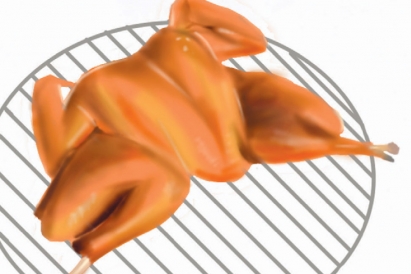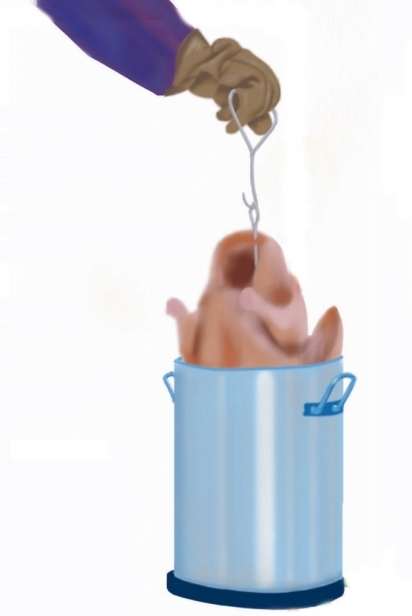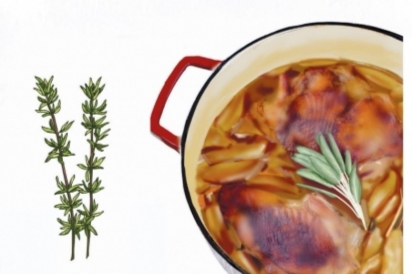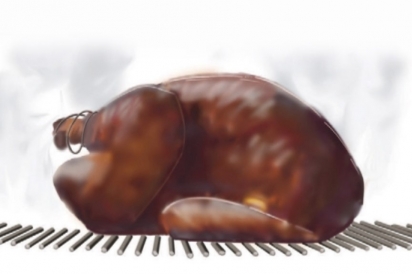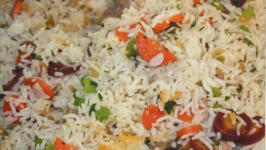10 Ways to Turkey
Holiday gatherings are often all about tradition. Sometimes our nostalgia is built around memories of food and family. Even if something in us wants things to be the same, mixing it up can create new and exciting memories and also challenge the way things have always been.
Turkeys are not just for Thanksgiving dinner. In fact, many people are becoming more aware of the potential issues with the American narrative of the Thanksgiving story in relation to the Native people, and are considering how to celebrate, if at all. But there is no reason to do away with the delicious turkey feast altogether. With the plethora of ideas for leftovers Shared in these pages, you don’t need a holiday as a reason to roast a turkey on any Sunday and then feed the family for the entire week.
EDITOR’S NOTE: Nixing the turkey altogether, in favor of fish or vegan fare, is another great way to switch things up.
UNIVERSAL TURKEY TIP #1:
In each of the different cooking methods below, the turkey can be seasoned with your favorite rub, doused in your favorite basting fat or brined with your favorite salts and acids.
UNIVERSAL TURKEY TIP #2:
When seasoning a turkey, consider putting a large percentage of the seasonings, with fat, underneath the skin. This holds it in place to infuse the meat with more flavor during the cooking process.
Traditionally Roasted
Seasoned with your favorite rub (see page 23 for ours) and fat of choice (salted butter, local olive oil, coconut oil, bacon fat). Lay the turkey in a roasting pan on roasting rack, breast side down. If your bird is small enough, you can flip it (hopefully not a t anyone) at the end of the cooking process to crisp up the skin.
Temperature: 325°F
Time: 15 minutes per pound unstuffed; about 18 minutes per pound stuffed
Tips: Roasting your bird breast side down helps the meat to stay juicy.
After removing from oven, cover with foil for 10 to 20 minutes before slicing.
Remove stuffing before slicing.
SAFETY NOTE #1:
Stuffing that is roasted inside a turkey will be done when it reaches 165°F. When eating it as leftovers, it should be reheated to the same temperature.
SAFETY NOTE #2:
No matter which way you cook turkey, to be safe for consumption it should reach an internal temperature of 165°F as read by a meat thermometer inserted 2—3 inches into the thickest part of the meat near a bone.
Spatchcocked on the Grill
Spatchcocking or butterflying is a method of cooking poultry that removes the backbone and lays out the meat flat for faster cooking. Best if your birds is on the smaller side; 10—14 pounds is perfect for this method, depending on the size of your grill.
Temperature: Prepare your grill using indirect heat to about 350°F
Time: Plan for about 7-8 minutes per pound.
Tips: Use sharp kitchen shears to cut out the backbone, starting at the tail, and save it to use in the gravy or for broth later. (See recipe on page 26.)
Season a usual but be sure to season all sides.
If you do not have a grill or don’t want to use one, spatchcocking can also be used to roast a turkey more quickly in the oven.
Deep fried
Stories of deep-fried turkey fires litter the internet. But if done right and carefully, deep-frying a turkey cam be a safe and satisfying accomplishment. While we offer the basics here, it is a food idea to research safety and best practices before attempting this for the first time.
Temperature: $tart with low temps (275°F) increase heat to about 350°F after you add the turkey to the oil. This will prevent some of the splattering that can sometimes occur.
Time: This method cooks a turkey very quickly. Expect about 3—4 minutes per pound or 30—45 minutes for the whole bird.
Tips: For Safety, never use a deep-fryer inside or near the house. It is best to set up the fryer on a flat surface at least 10 feet away from structures, trees or anything combustible.
Work slowly when lowering the turkey into the oil. Consider wearing heavy-duty protective gear.
To determine how much oil you will need, place your uncooked turkey in the frying pot. Add water until it covers the bird byhalf an inch. Remove the turkey, draining any excess water backinto the pot. Mark a line in the pot or measure the water left. This will be the amount of oil you will use. Be sure to completely dry the pot before adding the oil.
While the oil is heating up, take the turkey out of the fridge and completely dry it.
Brined
Brining is a method of soaking with a salt water solution prior to cooking, for some, brining is a little bit of insurance in case of overcooking. Typically, a brined bird will retain more of its moisture when cooked.
Preparations: This can be done with any sized bird. Remove any giblets. Prepare salt water by heating I quart of water and dissolving I cup of kosher salt into it. In a container large enough to hold the entire bird covered in water, add flavors like cloves, lemon peels and herbs to the turkey. Pour in salt water, then additional cold water until the turkey is covered completely. Soak for at least 12 hours in the refrigerator.
Tips: Weigh the turkey down with a plate or bowl before covering the container.
If your fridge’s crisper drawer is leak proof and big enough, it can be used as your brining container to save space.
Only brine turkeys that have not been pre-processed. Do not use if labled “kosher,” “pre-brined,” “enhanced” or self-basting.” For that matter, see page 23 for where to find fresh pasture-raised turkeys in Ventura County.
Skip the salt in your seasoning.
Brined birds can sometimes cook a little faster than unbrined. Best to keep an eye on internal temperatures about an hour before estimated finished time.
BOURBON BRINED: For something really special, add ½ to ¾ cup bourbon plus ¾ cup maple syrup (or ¾ cup brown sugar dissolved in 2 cups water) to your brine solution
Spit-Roasted
Spit-roasting is basically rotisserie. If you are fortunate enough to have a rotisserie roaster, follow the instructions roast your bird, 12 pounds or smaller, with your choice of herbs and to fats. If not, you can still spit-roast with a grill kit that will cost between $50 and $200. Do not spit-roast if stuffed.
Temperature: 325—350°F
Time: Figure on about 15—20 minutes per pound.
Tips: Collect the drippings in a drip pan and/or roast potatoes under the bird to catch the drippings.
Braised
Braising is a process of cooking meat in liquid about halfway covered, generally on the stovetop with vegetables, but it can also be finished in the oven. In this method, the turkey will be pre-cut into breast, thigh and leg sections.
Temperature: In a large pot with olive oil or butter, start with medium-high heat to sear the skin and cook the vegetables until just tender. Then lower heat to medium-low to simmer (covered) after adding liquid. At this point, if the oven is preferred, cook covered at 350°F.
Time: The turkey will need to cook for about an hour, checking for doneness of the different sections. The breast will cook faster than the thighs and legs.
Tips: Liquids for braising can include water, broth or stock, wine, spirits, beer or any combination that works.
If using the stove and over, the pot used should be oven-safe.
The turkey should be removed from the pan after searing to cook vegetables, then returned to the pan just before liquid is added.
When the turkey is done, the pan can be deglazed and the drippings used to make a gravy.
Smoked
Smokers have been all the rage over the past couple of Years. According to the market research company NPD Group, Inc., American consumers spent more than $4.9 billion on grills, smokers and related products during the first year of the pandemic. If you are one of those buyers, this option might be a fun one to try!
Temperature: 250—300°F
Time: Plan for about 45 minutes per pound of turkey, but budget in an extra 30 minutes just to be on the safe side. If you want to crisp up the skin, plan for about 45 minutes in the oven at 550°F
Tips: Stick to smaller turkeys to fit in the smoker. 8—12 pounds unstuffed is usually perfect.
Cook your stuffing in the oven instead of in the bird.
Put a drip pan under your turkey to collect drippings for the gravy.



